 W
WCarmen Amaya was a Spanish flamenco dancer and singer, born in the Somorrostro district of Barcelona, Catalonia, Spain.
 W
WMaría Dolores Amaya Vega, better known by her stage name Remedios Amaya, is a Spanish flamenco singer. She represented Spain at the 1983 Eurovision Song Contest.
 W
WÁngel Sampedro Montero, better known as Angelillo, was a Spanish singer of popular songs in his time. He has been described as a "popular idol of the flamenco copla", a very particular style of flamenco, along with fandangos, soleares, saetas, caracoles and tarantas etc. He was also one of the earliest singers to sing in a forced falsetto in flamenco. He was also an actor in musical films of Andalusian folklore: He appeared in films such as La hija de Juan Simón (1935) and Suspiros de Triana (1955), becoming a film star for Filmófono and working with esteemed directors such as Luis Buñuel, which led to him being nicknamed “the nightingale of Andalusia”.
 W
WAniya la Gitana was the stage name used by Ana Amaya Molina also known as Anilla la de Ronda (1855-1933). She was a Spanish flamenco guitarist, singer and dancer.
 W
WTaína Asili is an American musician, singer, songwriter, poet, artist and activist. Born in Binghamton, New York to Puerto Rican parents, she first came to prominence in the late 1990s as the singer for the punk band Anti-Product, and later for her social justice themed music with the band Taina Asili y la Banda Rebelde. Asili’s musical career has spanned genres as diverse as Afro-Caribbean music, flamenco, hardcore punk and opera, and her art is driven by her work on prisoner justice, climate justice and food justice.
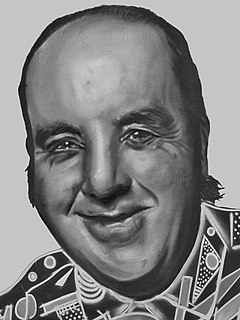 W
WGregorio Esteban Sánchez Fernández, known as Chiquito de la Calzada, was a Spanish flamenco singer and actor, although he was more famous as a stand-up comedian.
 W
WJosé Monje Cruz, better known by his stage name Camarón de la Isla, was a Spanish Romani flamenco singer. Considered one of the all-time greatest flamenco singers, he was noted for his collaborations with Paco de Lucía and Tomatito, and the three of them were of major importance to the revival of flamenco in the second half of the 20th century.
 W
WManuel Ortega Juárez was a Spanish flamenco cantaor (singer).
 W
WMaría Antonia Vallejo Fernández, also known as La Caramba, was a flamenco singer and dancer.
 W
WAntonio Carbonell Muñoz is a Spanish singer-songwriter of Romani heritage, known for his participation in the 1996 Eurovision Song Contest.
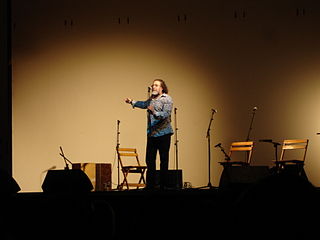 W
WDiego Carrasco is a Spanish flamenco guitar player, composer and singer (cantaor)
 W
WEstrella Castro Navarrete known professionally as Estrellita Castro was a Spanish singer and actress.
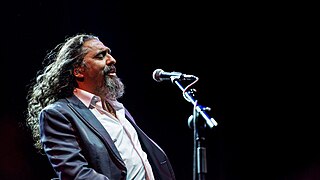 W
WDiego Ramón Jiménez Salazar, known as El Cigala, is a famous Romani Flamenco gypsy singer. As he himself has said, the nickname was given to him by three guitar players, Los Losada, for his powerful voice, not by Camarón de la Isla as commonly believed.
 W
WJuan Rafael Cortés Santiago, known as Duquende, is a Spanish Romani flamenco singer (cantaor). He is considered a successor to influential Flamenco singer Camarón de la Isla. Since 1997, Duquende has been a member of the Paco de Lucía Sextet in addition to working as a solo artist.
 W
WEnrique Jiménez Fernández, known as Enrique el Mellizo was a famous flamenco singer, the most influential one in the development of the Cádiz flamenco styles. Together with Silverio Franconetti and Antonio Chacón, he is considered to be one of the most important figures in the development of flamenco. He was the author of one of the most important malagueña styles, and is reported to have created or developed some styles of Soleares, Alegrías, and Tangos. An oral tradition also states that he was the creator of the Tientos.
 W
WRafael Ojeda Rojas, better known as Falete, is a flamenco singer from Seville, Spain.
 W
WMaría del Mar Fernández is a Spanish flamenco singer best known for her rendering of the song "Señorita" from the 2011 Hindi film Zindagi Na Milegi Dobara.
 W
WMaría Dolores Flores Ruiz was a Spanish singer, actress, dancer and businesswoman. Popularly known as (La Faraona) since the 1950s, Lola is known for her overwhelming personality onstage. As a bailaora, she enraged several generations of continents, although she distanced herself from flamenco canons. Lola performed more than 35 films, pigeonholed, in many of them, in Andalusian folklore, although she also interpreted rumbas and rancheras.
 W
WSilverio Franconetti y Aguilar, also known simply as Silverio was a singer and the leading figure of the period in flamenco history known as The Golden Age, which was marked by the creation and definition of most musical forms or palos, the increasing professionalization of flamenco artists, and the shift of center from private gatherings and taverns towards commercial venues called cafés cantante. Silverio's voice was called “the honey from Alcarria”.
 W
WAntonia La Negra, artistic name of Antonia Rodríguez Moreno, was a Spanish Gitana cantaora and bailaora. Wife of the bailaor Juan Montoya, mother of the singer Lole Montoya, of the duet Lole y Manuel, and grandmother of the singer Alba Molina.
 W
WVictoria Santiago Borja, better known as La Tana, is a "universally acclaimed" Spanish flamenco singer.
 W
WJuan Peña Fernández, also known as Juan Peña "El Lebrijano" or simply El Lebrijano, was a Spanish Gitano (Roma) flamenco musician. As a flamenco-fusion musician he studied the musical relation and fusion of two cultures that coexisted in spain during Al-Andalus.
 W
WCarmen Linares is the stage name of Carmen Pacheco Rodríguez. Born in 1951 in Linares, Jaén Province, she is known as one of the finest flamenco singers in Spain. She belongs to the same generation of artists like Enrique Morente, Camaron, Paco de Lucía, Pepe Habichuela, José Mercé and Tomatito and she is considered as flamenco legend.
 W
WChano Lobato was a Spanish flamenco singer.
 W
WLa Macanita is the artistic name of Tomasa Guerrero Carrasco, a Spanish flamenco singer.
 W
W->
 W
WMaribel Quiñones or María Isabel Quiñones Gutiérrez in full, known under her stage name as Martirio is a Spanish singer born in 1954 in Huelva, Spain.
 W
WRamón Melendi Espina, known as Melendi, is a Spanish pop singer-songwriter that has sold more than 3,500,000 discs during his career. His specialties are rock, flamenco, and rumba styles.
 W
WJosé Mercé is a Spanish flamenco singer. As a 12-year-old he performed at flamenco festivals. Later he moved to Madrid where he recorded his first album in 1968.
 W
WAlba Molina Montoya is a Spanish-Romani singer who performs flamenco as well as hip hop and other forms of pop music. The daughter of the flamenco couple Lole Montoya and Manuel Molina, she collaborated with Las Niñas from the late 1990s and later with Spanish guitarist Ricardo Moreno producing Tucara (2009). More recently she has honoured her parents with the albums Alba canta a Lole y Manuel (2016) and Caminando con Manuel (2017).
 W
WRosa Morena was a Spanish flamenco pop star who achieved international fame during the 1970s disco era, with the song, "Échale guindas al pavo". Morena was born in Badajoz, Extremadura, Spain.
 W
WEnrique Morente Cotelo, known as Enrique Morente, was a flamenco singer and a controversial figure within the world of contemporary flamenco. After his orthodox beginnings, he plunged into experimentalism, writing new melodies for cante and jamming with musicians of all styles, without renouncing his roots in traditional flamenco singing, which he kept on cultivating. Despite criticism"It hasn't been easy. First came the accusations of corruption of the music, of treachery in his struggle to disfigure what was already perfectly coded. When some albums and some categorical evidence of his knowledge of the classical approach laid these malicious comments bare, then came the most twisted condemnations. That the pace of the compás waned, that he didn't really make you feel and that kind of thing."
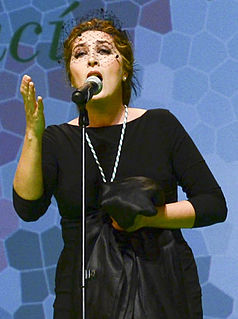 W
WEstrella Morente is a Spanish flamenco singer. She was born on 14 August 1980 in Las Gabias, Granada in southern Spain. She is the daughter of flamenco singer Enrique Morente and dancer Aurora Carbonell.
 W
WPastora Pavón Cruz, known as La Niña de los Peines, is considered the most important woman flamenco singer of the 20th century. She was a sister of singers Arturo Pavón and Tomás Pavón, also an important flamenco singer, and aunt to Arturo Pavón, the first flamenco pianist. Both brothers, Pastora and Tomás, together with singer Manuel Torre, were the inspiring models for the next generation of singers like Antonio Mairena, Pepe de la Matrona or Fosforito, who led the movement towards the revival of traditional forms in the decades of the 50s-70s.
 W
WMaría Rosa García, better known as Niña Pastori is a Spanish flamenco rock singer (cantaora).
 W
WJuan Pinilla Martin is a flamenco singer from Granada (Spain), critic, writer and columnist. In August, 2007 he won the Festival del Cante de las Minas, with the prize Lámpara Minera 2007, considered the most important flamenco prize. He studied Translation and Interpretation. At present he studies Law. In 2014, he was nominated for the prestigious Latin Grammys Awards In 2016 he was awarded the title of favorite son of the province of Granada (Spain) He is an artist committed with the social reasons. The night he won the Lámpara Minera he dedicated the prize to the workers victims of the workplaces accidents.
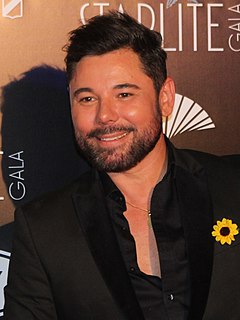 W
WMiguel Ángel Poveda León is a Spanish flamenco singer known by his stage name "Miguel Poveda". His father is from Lorca in Murcia and his mother from Puertollano. Poveda is a flamenco singer and interpreter of other genres. He has collaborated with artists from various disciplines who were previously unknown to flamenco audiences. In 2003, he moved to Seville. He often collaborates with Spanish flamenco guitarist Juan Gómez "Chicuelo", with whom he has toured extensively in Europe, Japan and the US.
 W
WRosalia Vila Tobella, known mononymously as Rosalía, is a Spanish singer-songwriter from Barcelona. Initially known for her contemporary interpretations of flamenco music, Rosalía received international attention after several collaborations with such artists as Travis Scott, Lil Baby, J Balvin, Pharrell Williams, and James Blake. She has received various accolades, including eight Latin Grammy Awards and a Grammy Award.
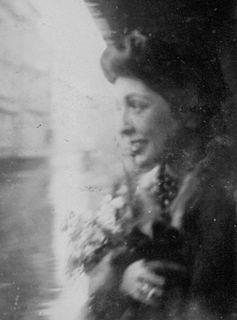 W
WRosita Serrano was a Chilean singer who had her biggest success in Nazi Germany between the 1930s and the early 1940s. Because of her bell-like voice and pitch-perfect whistling she received the nickname Chilenische Nachtigall.
 W
WLa Shica is the pseudonym of Elsa Rovayo, a Spanish pop singer with flamenco, Spanish dance, and classical ballet training capable of approaching singing and dancing by drinking in the copla and mixing and fusing it with urban sounds such as hip-hop and rap. Andreu Buenafuente said of her that she was "the coplera 2.0", also saying that she is the coplera of the 21st century. She has shared the stage with artists such as Martirio, Bebe, Jorge Drexler, Pau Donés, Manuel Carrasco, and Rosendo. In 2011 she won two Premios de la Música as Artista Revelación and Autor Revelación.
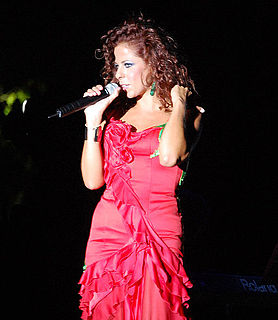 W
WMaría del Pilar Sánchez Luque, better known by her stage name Pastora Soler, is a Spanish singer. She is also a songwriter and her compositions usually mix copla or flamenco with pop or electronic music.
 W
WFrancisco Antonio Toronjo Arreciado, known as Paco Toronjo, was a Spanish flamenco singer.
 W
WManuel Soto Loreto, known as Manuel Torre or Manuel Torres, was a Romani (Kalo) flamenco singer.
 W
WJuan Valderrama Blanca, better known as Juanito Valderrama, was a Spanish flamenco and folk singer. Although he was known for singing copla, he always claimed to be a flamenco singer.
 W
WJuan el de la Vara is a Spanish flamenco singer. He has worked with numerous artists, including Paco de Lucia.
 W
WMaría Dolores Castellón Vargas was a Spanish singer. When she was young she went to sing to the theatre Teatro Calderón of Madrid. She sang alongside her brother, Enrique. Later she appeared on television, notably A la española, directed by Valerio Lazarov (1971).